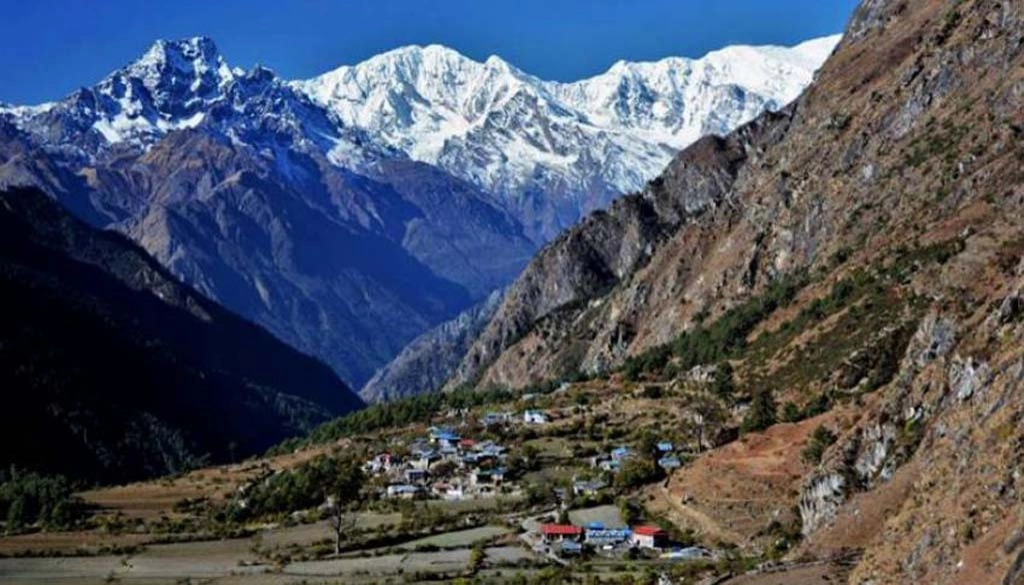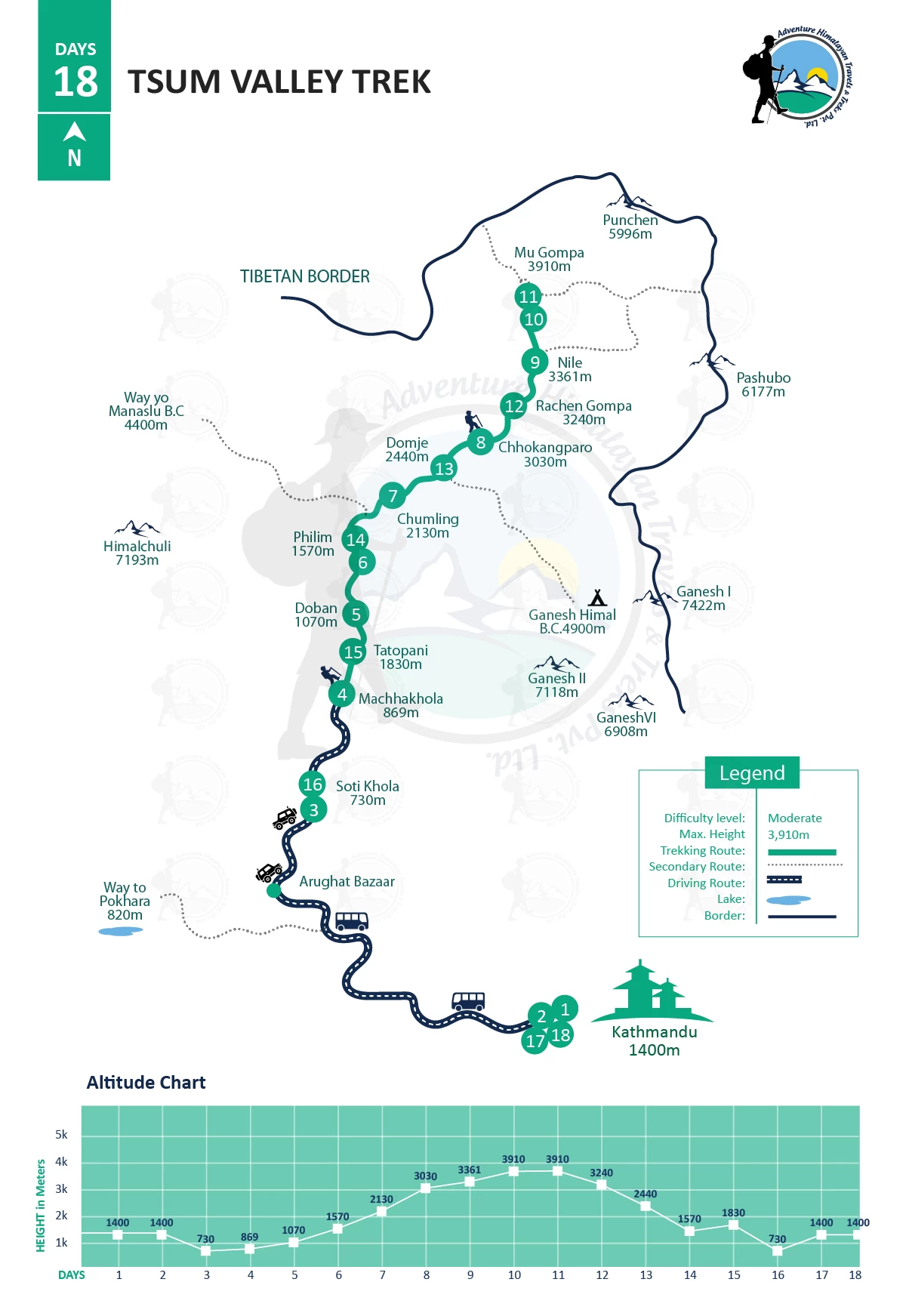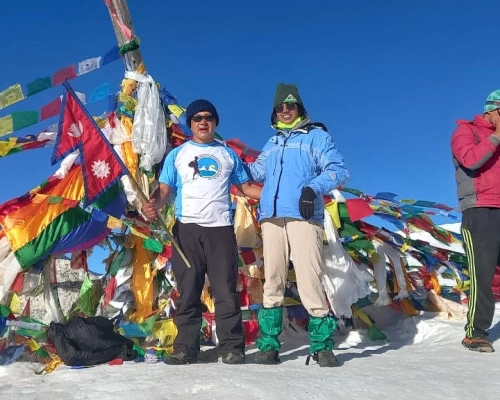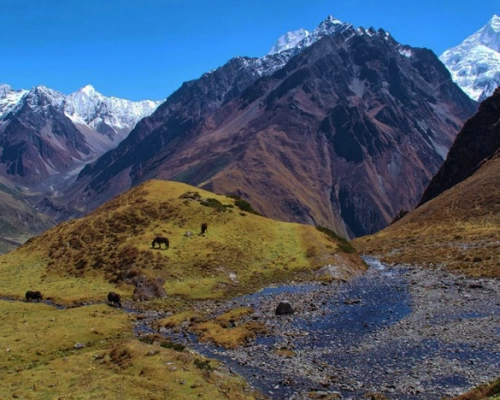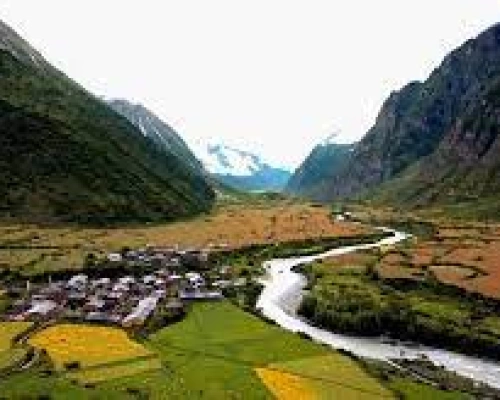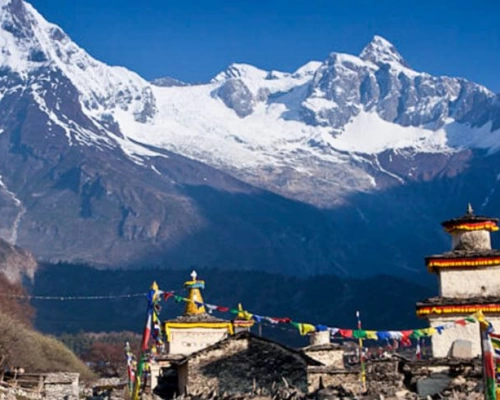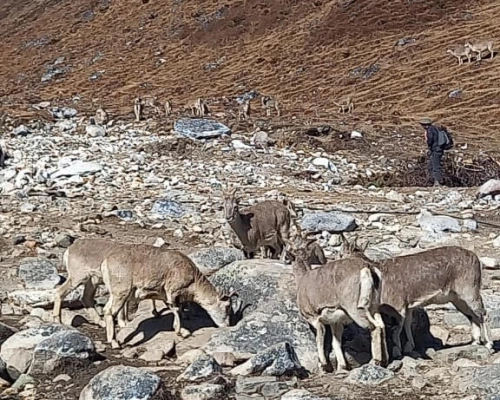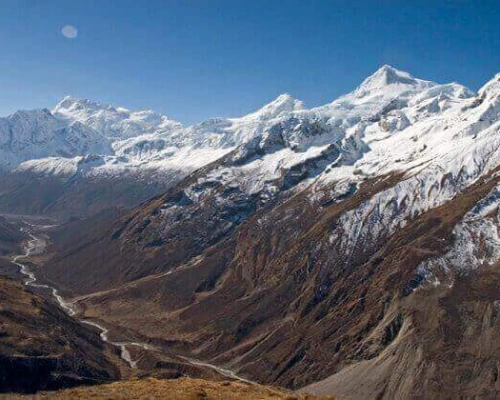The Tsum Valley Trek is an amazing journey of a lifetime that lets travelers witness Tibet coming alive in the northern part of Gorkha in the vicinity of the Tibetan border, whose unique culture, art, traditions, and religion trace the footprints of Tibetan Vajrayana Buddhism.
The whole valley is a sacred realm in the closer embracement of the Himalayas, set in remote terrains and stunning landscapes that provide magnificent views of numerous towering peaks such as Manaslu, Ganesh, Shringi Himal, Boudha Himal, and others.
The name of the valley, 'Tsum', is derived from the Tibetan term 'Tsombo', which translates as ‘Vivid’ or 'Clear', and the local inhabitants preferred calling themselves ‘Tsumbus’ from the valley of Beyul Kyimolung, which renders it the valley of happiness.
Therefore, a trek here is considered the exploration of the divine valley, which is believed to have been crafted by the Buddhist saint Padmasambhava in the 8th century to shelter the people fleeing from war, religious persecution, and famine.
The major trailhead of Tsum Valley is generally Arughat or Soti Khola, while the 17-day Tsum Valley custom-made trekking by Adventure Himalayan Travels and Treks commences from Arughat after a thrilling ride from Kathmandu, passing by countless rivers, streams, cascading waterfalls, and verdant forests.
Throughout the trek to Tsum Valley, you will be filled with the spiritual energy of the locality as you enter the land, which has countless monasteries and gompas festooned with colorful prayer flags.
To conclude, the Tsum Valley Trek is an experience of life that is totally unexplainable in words and a must-go trek destination in Nepal that lets the trekkers venture into the land abundant in natural biodiversity as well as a cultural panorama all in the famous Himalayas of the country of Mount Everest (8,848m).
What to expect at Tsum Valley Trek?
The Tsum Valley Trek is an opportunity to explore the true and enriching culture of the remote Nepalese Himalayas in the more secluded Manaslu region sharing the border with Tibet, which exudes a unique Buddhist aura that gives the valley an edge from the other rural valleys of Nepal.
This particular trek takes you high up to the mountains of Nepal through lush pine and rhododendron woods, past the dwellings of welcoming local communities, where you will get to observe the ancient Buddhist culture and practices in the centuries-old monasteries. In short, expect:
Embark on the remote restricted Tsum Valley
The Valley of Tsum was a forbidden region in Nepal until 2008, which means it is a relatively unexplored trekking path that has just been recently opened to adventurers from all over the world and still retains the serenity of the Himalayan valleys in a remote area.
The valley is located in scenic settings and contains typical Tibetan-style flat-roofed stone houses, which offer a glimpse into the hard-working traditional lifestyle of the Tsumbas. Due to its remoteness, the valley is left unspoiled by mass tourism and provides the ultimate sense of tranquility and isolation.
Tempting Buddhism and monasteries in Tsum Valley
Tsum is a Buddhist region at the bottom of the majestic Ganesh Himal close to Tibet with a vast history of dharma practices blessed by several sages like Milarepa, Padmasambhava, and many others, as evidenced by Thankas, portraits, and paintings discovered in several caves scattered throughout the valley.
Among them, Piren Phu, or Pigeon Cave, holds the most substantial religious significance next to the settlement of Burji, which stems from the meditation of the legendary Buddhist master Milarepa. Rachen Gompa and Mu Gompa are the two most noteworthy monasteries in the region.
Rachen Gompa is located in the northern section of the Tsum Valley in the Chhule village, which follows Tibetan Buddhism in the Nyingma lineage and is famous for its statues and murals, while the Mu Gompa is the tallest monastery in the area at an elevation of 3,700 meters, which provides expansive views of the encompassing mountains and villages below.
The tiny villages in the valley clustered along the banks of rivers are where the descendants of Tibetans reside, forming an extraordinary cultural and natural fusion to witness, while the inhabitants here are strongly guided by Buddhism that permeates every aspect of the lives of people from Tsum in everyday existence.
During your 17-day Tsum Valley trek, you will get to encounter this pristine and unexposed cultural allure born and brought up in the lap of the Himalayas, which could be a great help in finding yourself a liberation as well.
Heavenly Mountain Vistas in Tsum Valley Trek
It is no wonder that Nepal is renowned in the world for its stunning mountains and peaks when the Tsum Valley alone is dominated by several ranges. The precise number of summits visible during the Tsum Valley Trek varies depending on the weather, the specific route you have picked, and the duration of your trek.
In the Tsum Valley 17-day trek, you will be accompanied by the mythical views of Ganesh Himal (7,422 m), Mt. Manaslu (8,156m), Boudha Himal (6,672m), Shringi Himal (7,161 m), and Himalchuli (7,893m), along with the spectacular alpine Himalayan landscapes and glances at the Tibetan plateau.
You must not miss the view from Mu Gompa, Larkya La Pass, and Piren Phu and they tend to widen the overall mountain and surrounding views including sunset and sunrise, meadows, and valleys as well.
Diverse wildlife and nature endeavor in Tsum Valley Trek
The Tsum Valley trekking trail falls under the Manaslu Conservation Area, which protects countless common and endangered species of flora and fauna. Watch out for several rare wildlife, such as marmots, birds, Himalayan tahr, and blue sheep, which build a perfect harmony with the region's cultural diversity.
During your trek, you will also pass through a wide range of Himalayan environments, from subtropical woods to alpine meadows. Generally, the lower lands possess dense, lush forests of rhododendrons, bamboo, pine, and ferns that convert into alpine meadows with an array of wildflowers and, after a while, open up some barren lands.
Adventurous Budi Gandaki River and Gorge in Tsum Valley Trek
The Tsum Valley terk purses the Budi Gandaki River courses and its tributaries. In several sections of the trek, you will be crossing numerous rivers and swaying suspension bridges over them.
These bridges connect picturesque river valleys guarded by towering cliffs and peaks on backdrops adorned by prayer flags, mani walls, and water-powered prayer wheels, adding to the cultural and spiritual dimension.
Simultaneously, the Budhi Gandaki River has craved some constricted and deep gorges, which are practically impressive and spine-tingling and provide the most awe-inspiring views of the turbulent river below.
Altogether, the river Budhi Gandaki and its gorge provide a sense of accomplishment and memory engraved forever in the hearts of adventure lovers, as they are not only the challenging part of the Tsum Valley Trek but also the major unbeatable highlights of the Himalayan region.
The Best Itinerary to Trek Tsum Valley
Adventure Himalayan Travels and Trek The 17-day trek to Tsum Valley is an awesome customizable trekking itinerary to meet the needs of our guests, whom we (Nepali) consider gods.
We have been customizing trekking itineraries for more than 20 years now, in case you want to make some changes to the Tsum Valley Trek itinerary and add or deduct trekking days as per the special requirements and time schedule of our clients.
The 17-day Tsum Valley trip is our standard package, considering all the essential aspects of successful trekking in the Himalayas of Nepal, such as acclimatization day, legitimate exploration, and appropriate trekking starting and ending points in the almighty mountains, whose weather can alter at any moment.
Nonetheless, this 17-day itinerary can be tailored to address certain demands and necessities. However, it is important to include several sightseeing and acclimatization days in your trekking days that naturally extend the package itinerary days by some extra dollars.
Therefore, the best itinerary to trek the Tsum valley is 17 days beginning in Arughat, which includes a day of preparation and sightseeing in Kathmandu and a rest day at Mu Gompa at an affordable trek cost for the most budget-friendly and fulfilling trekking experience in Nepal.
Tsum Valley 18 Days Trek Cost
The Tsum Valley Trek cost varies depending on quite a few factors, such as the trekking agency you have chosen for your trek, the service you have selected, the duration of the trek, the number of people, and the trekking season.
Autumn and spring are considered the peak trekking times of the year in Nepal when the trekking trails serve hustling and bustling masses of tourists. Hence, pre-booking is a better idea, and in case you missed doing that, the tea house and food might get more expensive for you than usual.
The 18-day Tsum Valley Trek costs USD 1,325 for 7–10 pax, which is a classic trekking cost set by Adventure Himalayan Travels and Treks. If your trek group has fewer than 10 members, we can modify the package cost, which may range from USD 1,325 to USD 1,625.
Basically, we are offering a group discounted price on the Tsum Valley trek cost, which is as given:
- USD 1,625 for 1 pax
- USD 1,425 for 2-3 pax
- USD 1,375 for 4-6 pax
- USD 1,325 for 7–10 pax
This package cost covers almost every expense associated with the trek, including the permits, accommodation, meals, guides, and porters, and their expenditure on insurance, transportation, and side trips.
In the event of 18 days of Tsum Valley Trek, the cost pays off for the necessary equipment for trekking as well, and solo trekking might not be as cost-flexible as group treks are, which is the same in terms of holistic trekking involvement too.
I.e., the larger the group, the better the Tsum Valley travel participation to share not only the trekking expenses but also the tale of your adventure, culture, and unforgettable moments with people from different parts of the globe.
Note: The overall Tsum Valley Trek cost can change if you decide to make adjustments to the provided meal, accommodation, and services included in the package that you can upgrade wherever you prefer for a better trekking experience.
